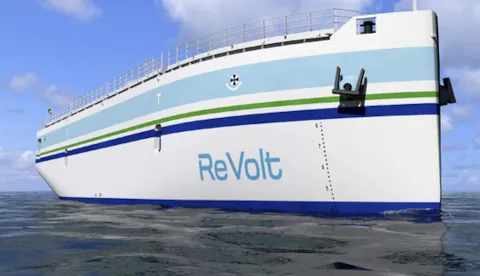A call for urgency
Ships move more than 80% of world trade by volume, and are by far the most energy efficient mode of transport. In fact, there is a large potential for coastal shipping to replace less efficient, but rapidly growing road transport. To make this prospect even more attractive, the maritime sector and its partners must pay attention to emissions and air quality – an area also likely to attract a lot more public scrutiny in the future.
One way of improving energy efficiency and reducing local pollution and greenhouse gas emission is using electric power from shore. When a ship is moored, it no longer requires energy for propulsion. However, there are still consumers on board, including lighting, heating/cooling and auxiliaries etc., which need energy. This energy requirement is largely met by on board diesel-powered generators running at part loads, which leads to emissions of greenhouse gases, local pollutants and noise. This also often occurs in densely populated areas directly exposing people to pollutants that can have adverse health effects. As a mitigation alternative to using on board diesel-powered energy generation, electricity from shore power grids can be applied. In addition, for plug-in battery-hybrid ships and for fully electric ships, shore power can be used for charging on board batteries for covering all or parts of the energy required for propulsion. These ships are expected to represent an increasing proportion of ships in the future, and the adoption of these types of propulsion systems are directly dependent on the infrastructure for shore power.
A new methodology
By using AIS (Automatic Identification System) data in combination with ship technical data and engine characteristics, project partners ABB, Cavotec, Port of Oslo and DNV have developed a methodology for identifying where in a port it makes most sense – from an environmental and cost perspective – to develop shore power infrastructure and what the capacity needs to be to serve existing ship traffic. The methodology can also identify specific ships and routes that are eligible for battery propulsion. A cost calculator has also been established for the purpose of giving stakeholders a rough estimate on the investment and operational cost, return on investment and emission reduction potential for investing in and utilizing shore connection systems.
